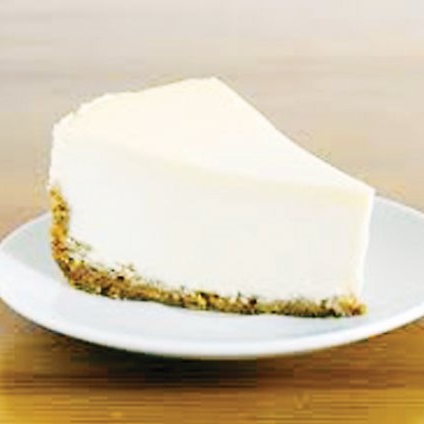click to dowload our latest edition
CLICK HERE TO SUBSCRIBE TO OUR NEWSLETTER


Published
5 years agoon
By
adminJORDAN MOSHE
Before we seek an answer, it is important to note that not all cheesecakes are the same. The quintessential Shavuot dish comes in a myriad of forms, including variations such as sweet, savoury, custard, mousse, crumbly, topped, and plenty more. They are all made from innumerable cheeses like mascarpone, ricotta, cream cheese, pot cheese – the list is endless.
The diversity of its forms and ingredients is equally true of its development over the years. Recipes have evolved depending on location and time, with ingredient changes and modern technology having a hand in the form the cheesecake takes. We would probably fail to recognise earlier cheesecake if they were served today at shul brochas.
Although cheese making can be traced back as far as 2 000 BCE, cheesecake seems to have first appeared in ancient Greece. The author of Cheesecake Madness, Joe Segreto, explains that the first recorded instance was between 800 to 700 BCE on the Island of Samos in the Aegean Sea.
This decadent treat was reportedly fed to competitors in the first Olympic Games, supposedly giving them the energy needed to compete. Unlike the complex creations of today, the simple ingredients of flour, wheat, honey, and cheese were formed into a cake and baked.
The dish then became a wedding cake for wealthy Greek brides and grooms, eventually reaching the common man by the time of the Roman Empire.
As a result of the empire’s vast reach, cheesecake spread throughout Europe during Julius Caesar’s reign, supposedly even reaching the Middle East.
Some suggest that the dish hails from the Middle East. Joan Nathan, the author of Jewish Holiday Cookbook, maintains that the cake was originally created in the Middle East by placing sour cream in a bag and stringing it up for a time. It allowed the moisture to drain so that it would dry into a type of curd. This was then mixed with honey, lemon peel, egg yolks, and more sour cream, and baked into quite a lumpy cake. Nathan says the dish was spread by the Crusaders, who brought it back with them to Europe in the 12th and 13th centuries.
He says cheese curd was transported to Russia by the Mongols in the 13th century, where it was embraced by the Jewish community. Jews developed the recipe further when they moved to other places in Europe and North America. As Jews adapted recipes to local ingredients and tastes, variations on the original abounded across the world.
Even Christian tradition seeped in, with Italian Easter cheesecake being made with citrus rind and fragrant orange blossom water. This is served today in Italy on Shavuot, while cheesecakes in France are often made with fresh farmer’s cheese or savoury goat cheese, while Greek cheesecake uses Greek yoghurt, even feta. In Israel, Jews eat a light and creamy cheesecake made with gvina livana, a white cream cheese.
But how did this dish become associated with Shavuot?
Shavuot celebrates the giving of the Torah, a milestone in the journey of the Jews to Israel. It would therefore make sense that the promised sweetness of Israel be remembered on this day. Some say the sweetness of cheesecake is the flavour of the combined milk and honey of the promised land. Additionally, it may also be a nod to the early Greek cheesecake recipes which prominently featured milk and honey.
Another reason may lie in more recent history. German-Jewish restaurateur Arnold Reuben was the proprietor of Reuben’s Restaurant and Delicatessen, a landmark restaurant and deli in New York City which first started trading in 1908.
The restaurant became known for inventing the Reuben sandwich, a less-than-kosher composition of corned beef, Swiss cheese, sauerkraut, and Russian dressing, grilled between slices of rye bread.
However, Reuben also achieved greatness for his momentous decision to use cream cheese instead of milk curd in cheesecake for the first time in the 1920s. His creation became known as the New York Cheesecake, and it rapidly became all the rage among Jews and non-Jews alike.
His recipe, also known as Jewish cheesecake thanks to his heritage, was allegedly a favourite of actors and actresses wanting a little late-night indulgence after shows.
Some say cheesecake thus became popular in New York, especially on Shavuot, the holiday of dairy foods.
There is no particular religious rationale for eating cheesecake on Shavuot. A novel – and particularly cheesy – reason is that Har Gavnunim (the Mountain of Many Peaks) is one of eight names for Mount Sinai where the Torah was given. This name shares an etymological likeness to the word gvina (cheese) in Hebrew, hence the custom of eating cheesecake.
However, it may be that we eat cheesecake simply because there is little else to do. Unlike every other Jewish festival, Shavuot has fewer rituals for us to perform. Where Pesach has seders and Sukkot has a sukkah, Shavuot has no specific mitzvot (commandments) other than typical observances such as meals, prayers, and general festivity.
Perhaps it makes up for the absence of latkes, matzah, or apples dipped in honey.
Whatever the reason, the bond between Jews and cheesecake is firmly entrenched over Shavuot. Historical debate might help you to better understand the custom, but the burning question of which recipe to use is ultimately yours to answer.
